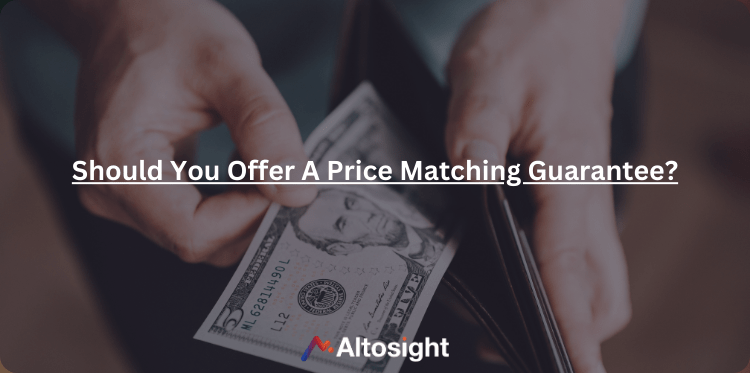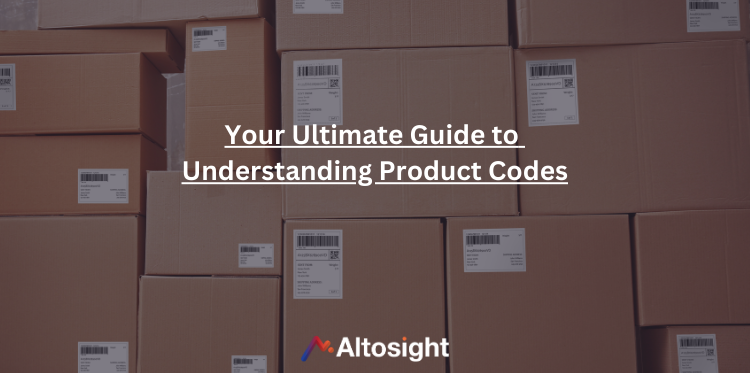
You’ve just purchased a pair of headphones, and moments later, you see that same pair of headphones in another store, but for a much lower price.
What would you do if you needed to buy a charger too? You might buy from the store that offered the lower price or at least check it out.
That’s how consumers think. They are often looking for the best price and they will often opt for the retailers that offer the most attractive deals.
Retailers know this, so they’re more often than not willing to match competitors’ prices or even beat them — and that’s what price matching entails. This pricing strategy is used to give customers the same price as your competitors in order to keep them loyal to your business.
In this article, we define price matching, the benefits and drawbacks, and more, so you can decide whether a price match guarantee can be right for your business or not.
What is Price Matching?
Price matching is a great way for retailers to ensure their customers keep shopping from them by getting them the best possible deal. It’s a practice where retailers offer to match or beat a lower price offered by another store for the same product.
For instance, if a customer finds a better price elsewhere, some retailers will match it or beat it so the customer can buy from them instead.
According to a study by the e-tailing group, 94% of online shoppers check prices before purchasing. And 65% of consumers check for price comparisons while physically shopping in a store.
So, it is unsurprising that retailers want to use price matching to ensure they don’t lose customers to competitors due to pricing.
Price matching provides shoppers access to low prices from their favorite retailers without having to shop from another store just to get a better price.
This benefits both buyers and sellers as buyers get their desired item at the lowest possible cost — while sellers get to keep their customers happy and loyal by offering them an unbeatable deal.
Implementing Price Matching
Businesses are different, so how they implement price matching will vary. For instance, brick-and-mortar retailers may not price-match online stores.
This makes sense, as the brick-and-mortar retailer has the product readily available, you don’t have to pay for shipping and also has more fixed expenses than a pure ecommerce store.
One other important point is that small businesses might find it harder to implement price matching due to lower margins and higher wholesale prices. Also, it might not make much of a difference if they implement it.
Here are some ways businesses can adopt a price-matching policy:
Standard Price Match
Standard Price Match means setting the same price as the competition for a product. Businesses employ this strategy when their competitors offer lower prices.
A prominent example is Best Buy, where they price match local retail competitors (including their online store prices).
Price Beat
Another way to sell your products at competitive pricing is to price-beat. How it works is that if a customer finds a product at a lower price elsewhere, then you match the competitor’s price and further reduce your price by a fixed amount or a percentage %.
Retroactive Price Matching
This price-matching strategy applies to products that have already been purchased. This means that if a customer buys a product from you and after a certain amount of time they find it cheaper on a competitor, you have to refund the difference.
The refund is usually cash but it can also be an in-store voucher.
Price Protection or Price Adjustments
This variations is like Retroactive Price Matching above, but for your own store.
This means that if a customer buys a product from you and later you drop the price of that same product, then the customer can get a refund of the price difference.
They need to show the item on sale for less than the original price in a specific time frame — usually not more than 14 days.
Such circumstances require retailers to adjust prices, reimbursing the difference between the customer’s original and current product price.
For example, if a customer buys from you a microwave for $400, and one week later you drop it to $300, then the customer can ask you to refund the difference, $100, usually in cash. Among the retailers with price adjustment policies are Macy’s, Gap, and Staples.
Pros of Price Matching
For the right business and with the proper execution, price matching offers several benefits, including:
Improved Customer Retention
When customers consistently get the best deals from you, they build loyalty to your business. This is because you make them feel that you are looking out for them.
Also, if they trust your store and want to buy from you but not sacrifice lower prices, they know they can come to you to get the best price and still shop from you.
From the customer’s point of view, you are willing to lose out on a few bucks to ensure they get the best deal possible. This results in increased sales for your store, as they know you value them and they will return to your business.
Reduced Showrooming
Showrooming allows customers to experience brands and products in person while seamlessly making purchases online — often their preferred method.
This happens because, although people still prefer to touch and see the merchandise they purchase, online retailers offer many items at lower prices. As a result, local stores serve as showrooms for online shoppers.
But when you offer to match the price they will get online, you can close a sale there and then.
Competitive Prices
Retailers always want to ensure that they offer competitive prices. But it is always a challenge to keep up with the latest pricing trends — especially if you try to monitor prices manually and not with a competitor price monitoring tool.
That’s where price matching can help. This pricing technique ensures that you always offer competitive prices even if some products are not up to date with the latest competitors’ prices.
Since your customers are constantly checking your competitors to ensure they get a fair deal, they take some of that responsibility off you.
Of course, this doesn’t mean you stop tracking your competitors’ prices. Instead, it gives you a cushion because consumers can spot price differences and bring them directly to your store.
It will also encourage shoppers to focus on other benefits of your business besides price. So, they may be more likely to purchase from you based on your assortment, shipping, shopping experience, support, loyalty, or service.
Higher Sales Figures
You drive foot, online traffic and sales to your store by implementing a price match strategy, as the customer knows they can get from you the same price they find somewhere else.
For example, if they are in your store and they find online the same product cheaper elsewhere, you offer the same price and make a sale then and there, instead of having the customer shop around.
This also saves time for the customer as they don’t have to go around shopping.
This will undoubtedly make that customer happy and a repeat shopper. If you also consider how that customer will likely become an advocate for your business, the potential for an even higher ROI is pretty high.
Cons of Price Matching
While price matching suits some businesses, it may not be the best choice for others — which could explain why a retailer like Amazon doesn’t offer price matching. Here are some drawbacks of this model:
Margin Losses
While price matching can increase customer satisfaction and potential revenue, it also carries the risk of margin losses.
This pricing strategy can attract customers looking for the best deal possible. However, businesses must recognize how drastically it could affect their bottom line.
Selling your products beyond your intended price can make it difficult for you to scale and stay profitable. This is because when you initially set the price of your products, you created enough leeway to recoup a profit.
But constantly reducing your price to appeal to customers can leave you with a smaller profit margin.
Encouraging Customers To Visit Other Stores
Retailers naturally want consumers to come into their stores, not their competitors. But price matching has the disadvantage of inherently encouraging shoppers to visit competitors.
Here’s how: When you tell your customers to go and check the price in the other store so you can match or beat it, you are giving a shot to your competitors to win your customer.
What if they get one-year free tech support in addition to purchasing that item? These are items that can swing the odds in your competitor’s favor.
Risk of Price Wars
When retailers consistently compete to offer the lowest price, they fight price wars. You match your competitors’ prices, and they undercut you further. Similarly, you match again, and so on.
As with price matching, price wars have similar disadvantages, such as reduced margins and lower-quality customer experience.
Be competitive, but don’t overdo it. If it’s not in your business’s long-term interest, don’t settle for lower than you’re willing to.
Should You Offer a Price Match Guarantee?
Large, well-recognized brands typically adopt price matching because they have a bigger market share and higher margins. However, if you’re still thinking about taking the plunge and offering a price match guarantee, make sure you:
- Consider your profit margins: While price match policies sound fantastic to customers, you shouldn’t ignore your margins. Analyze whether you can rationally match your competitor’s price. Consider if you have enough cushion to drop your prices. What if your competitors continue to lower their prices? Can you keep up? The last thing you want is to lose customers because you cannot match the price.
- Have a unique selling proposition(USP): What happens when everyone can match or reduce prices? Why should customers choose you when they can get the same price elsewhere? That’s why you need a unique offering that sets you apart. For instance, you can offer free shipping, gift vouchers, loyalty programs, etc., to gain a competitive edge.
- Explicitly state policies: Take some time to draft your price-matching policies and rules. It can include restrictions on online vs. in-store products, discounts, limited promotions not included in the program, etc. One good example of an explicit price matching policy is Best Buy’s. It is detailed and leaves nothing to the imagination.
Price Matching Examples
Best Buy
Under Best Buy’s Price Match Guarantee, you may receive a price reduction if the product is new, identical to a competing product, immediately available at a competing store or on its site, and not on Best Buy’s exclusion list. The consumer electronics retailer also offers price matching upon request during the return and exchange period.
Walmart
Walmart’s online store matches the price of items purchased in Walmart stores if they are in stock at Walmart.com. However, the policy does not cover those who reside in Alaska, Hawaii, or Puerto Rico. Also, the company does not price match items that have dropped in price after their purchase on Walmart.com.
Target
Target will match any price you find cheaper at Target and a select list of competitors if you ask for it within 14 days of purchasing the item.
Newegg
Newegg matches prices on select items, which can be identified by the label “Price Match Guarantee” in the price box on the right side of the product page. That applies whether you find the lower price on Newegg or at another seller that Newegg considers a main retailer. But you must notify Newegg within 14 days of the lower price.
Takeaways
You should periodically test and measure your policy as a retailer. While some retailers experience positive results, others don’t.
If you know of a problem with your policy early on, you can fix it and start fresh. Assess whether your price-matching policies are increasing sales and bringing in new customers. If you have a price-matching policy, you must determine whether it is profitable.





